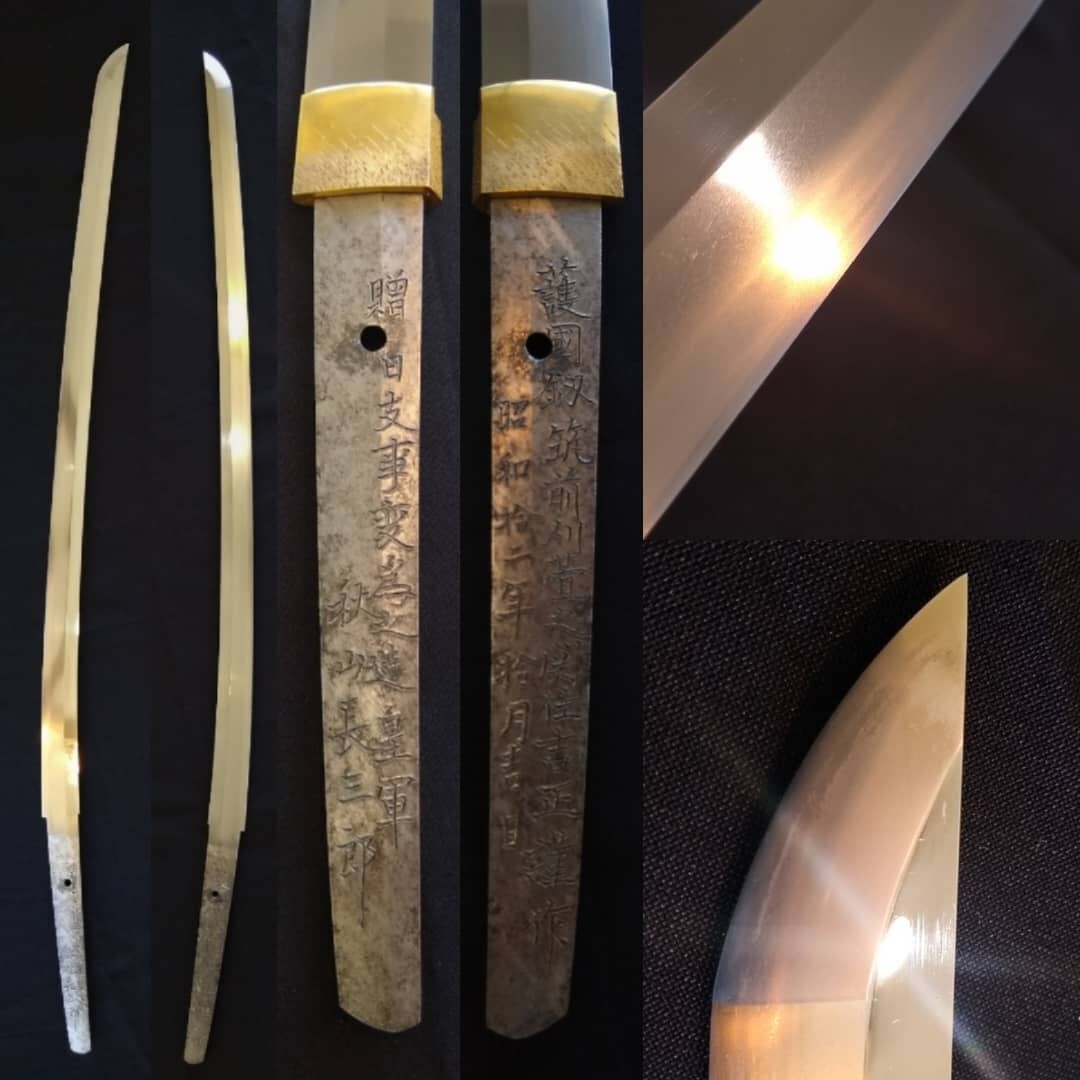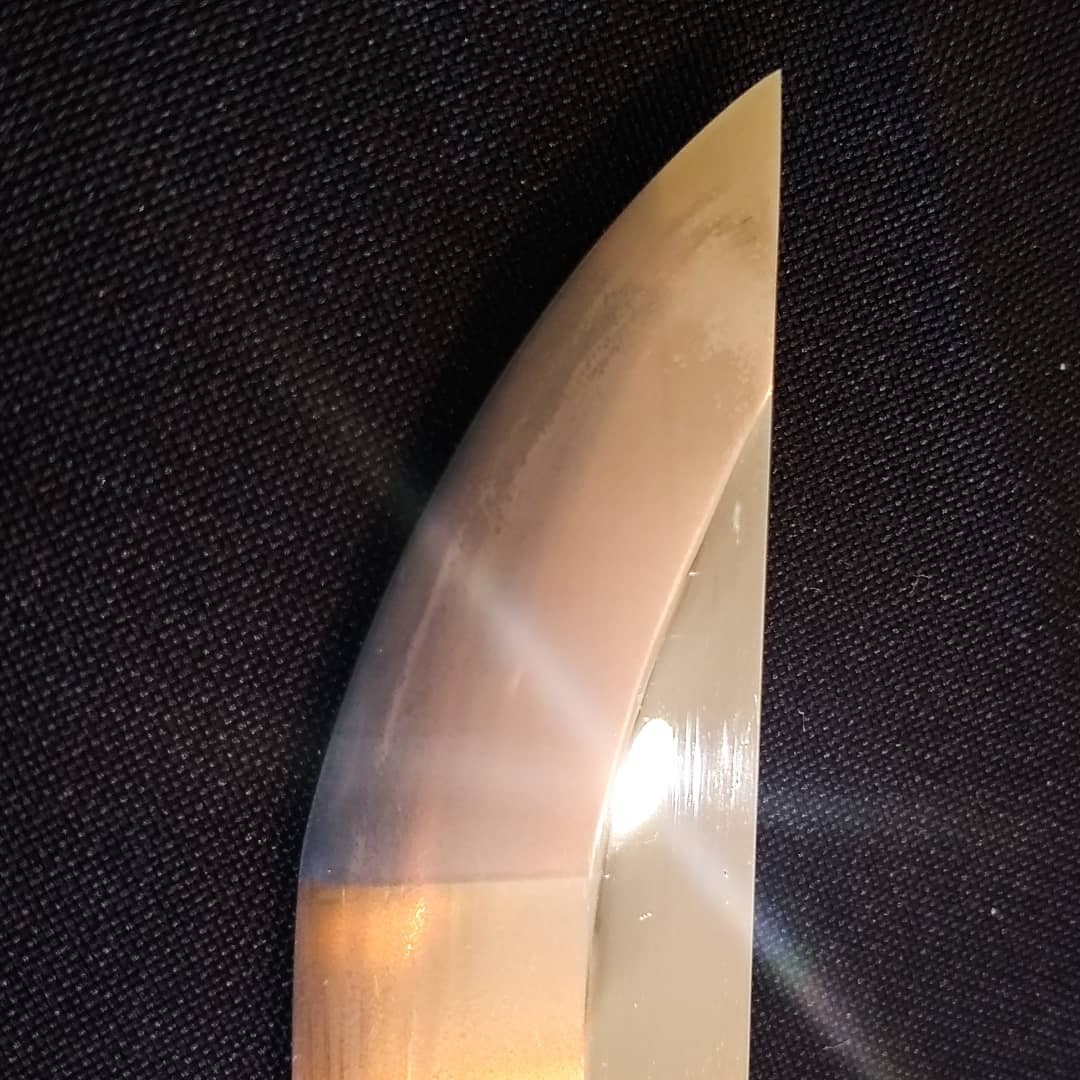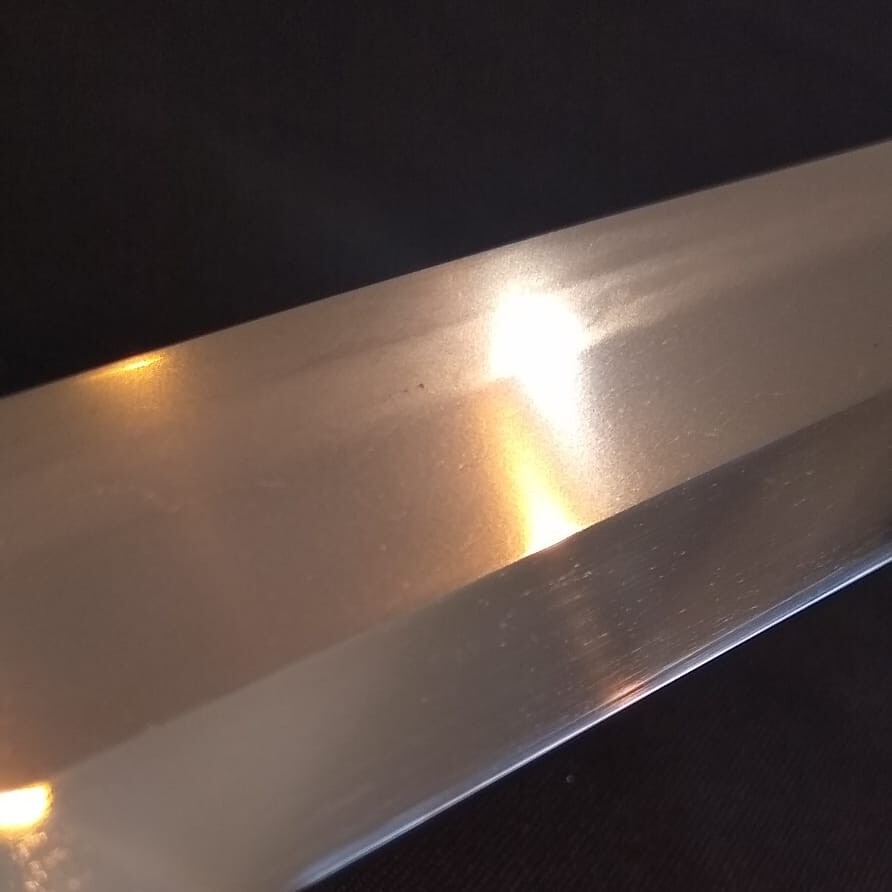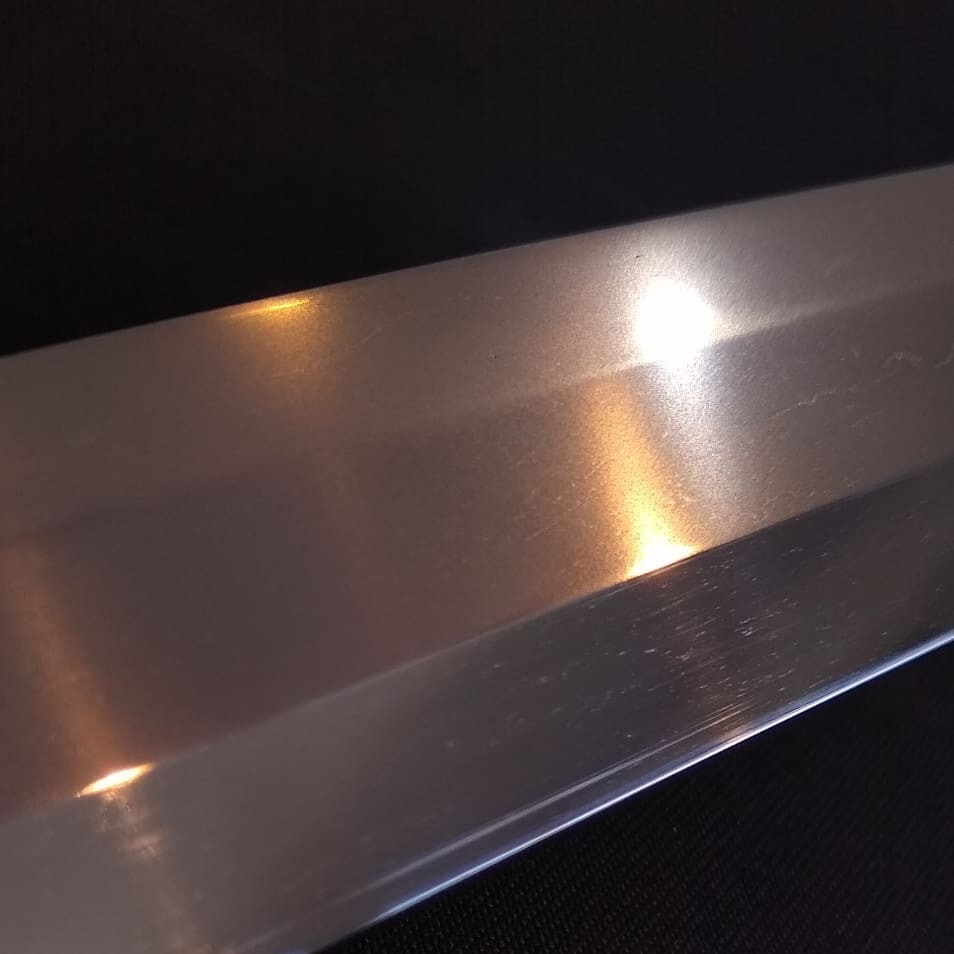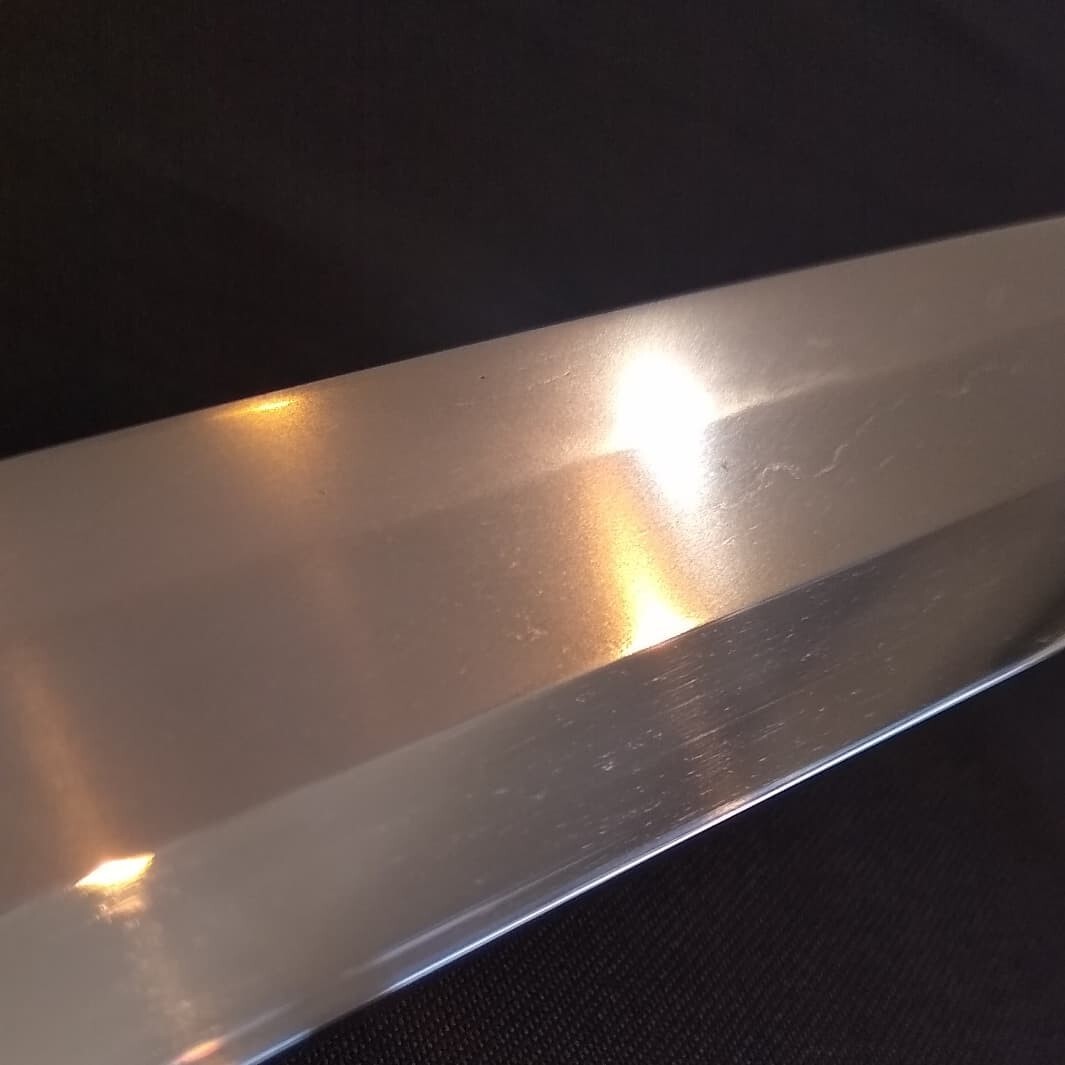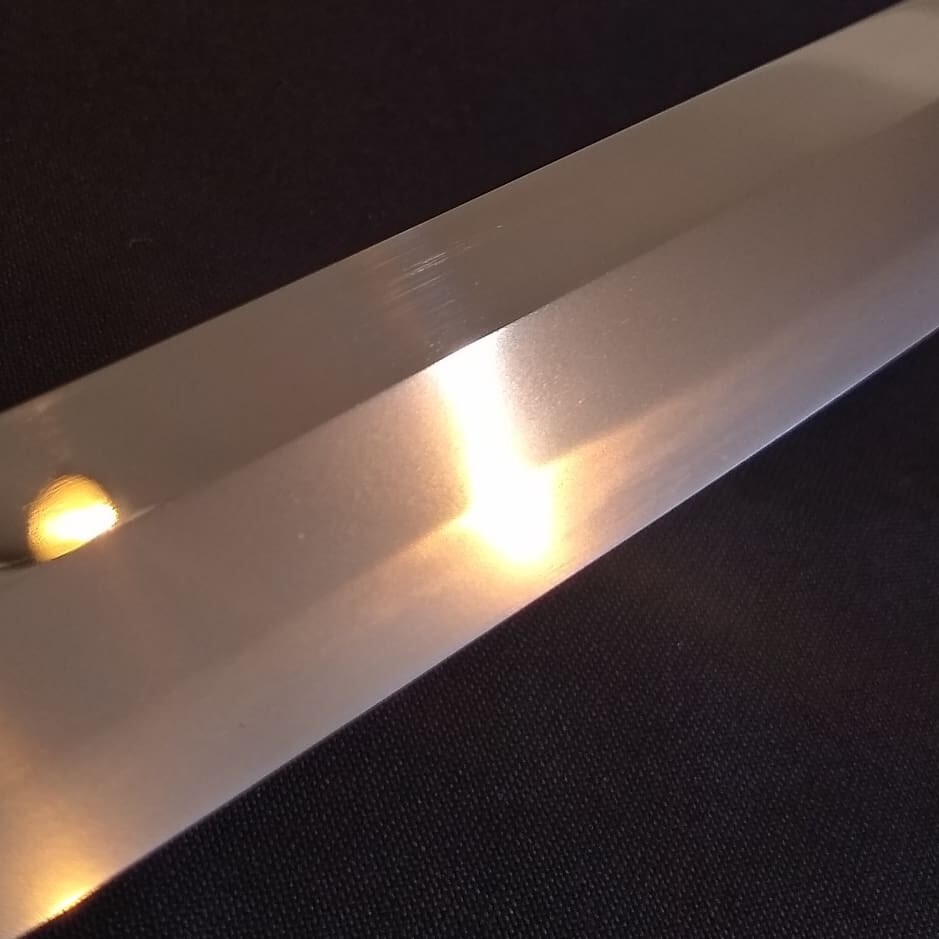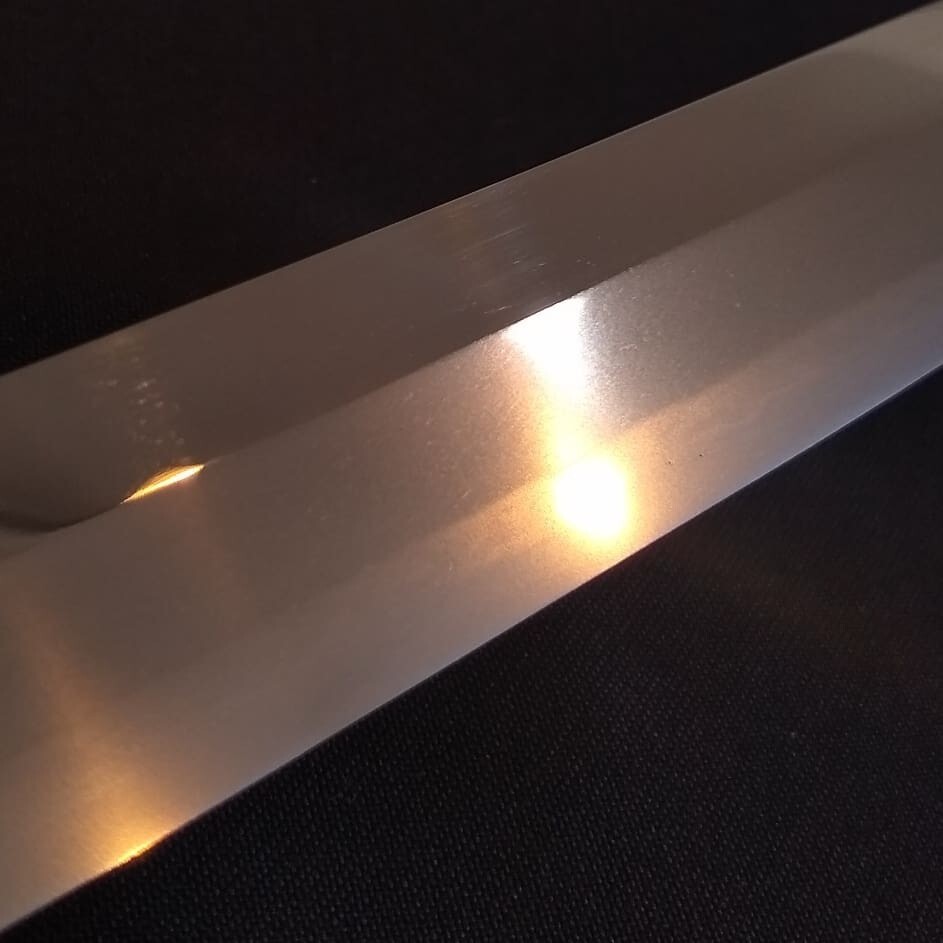Description
Gendaito are traditionally made modern Japanese swords forged from swordsmiths working after the Meiji period. Some references categorize gendaito as swords made after the end of the Meiji, including only the Taisho, Showa, Heisei and Reiwa eras. Those swords categorized as gendaito were made using fully-traditional methods, including a heat treatment in water, rather than oil, and using tamahagane (traditional Japanese iron) as the base material for their work. Tamahagane is made from satetsu (iron sand) and put through a smelting process in an tatara (clay furnace) for up to 72 hours to produce a quality iron for the forging process.
Those swordsmiths who were approved to forge gendaito during WWII were designated Rikugen Jumei Tosho. While for many years Showa period blades were overlooked, a number of exhibitions such as the first showing of Yasukuni-to, demonstrated the high level of craftsmanship exhibited in these swords. Some are extraordinarily impressive examples modelled on classical works (koto utushimono of smiths such as the Bizen Nagamitsu and the Ichimonji school). The schools of Miyairi Akihira, Gassan Sadakazu, Kasama Ikkansai Shigetsugu and others are especially famed for their quality of work and produced swords that are regarded today as exemplary examples that can be compared favorably with the swords of earlier time periods.
This Yoshimasa katana is a good example of a high quality gendaito made using traditional methods by one of the most skillful smiths of the time period.

